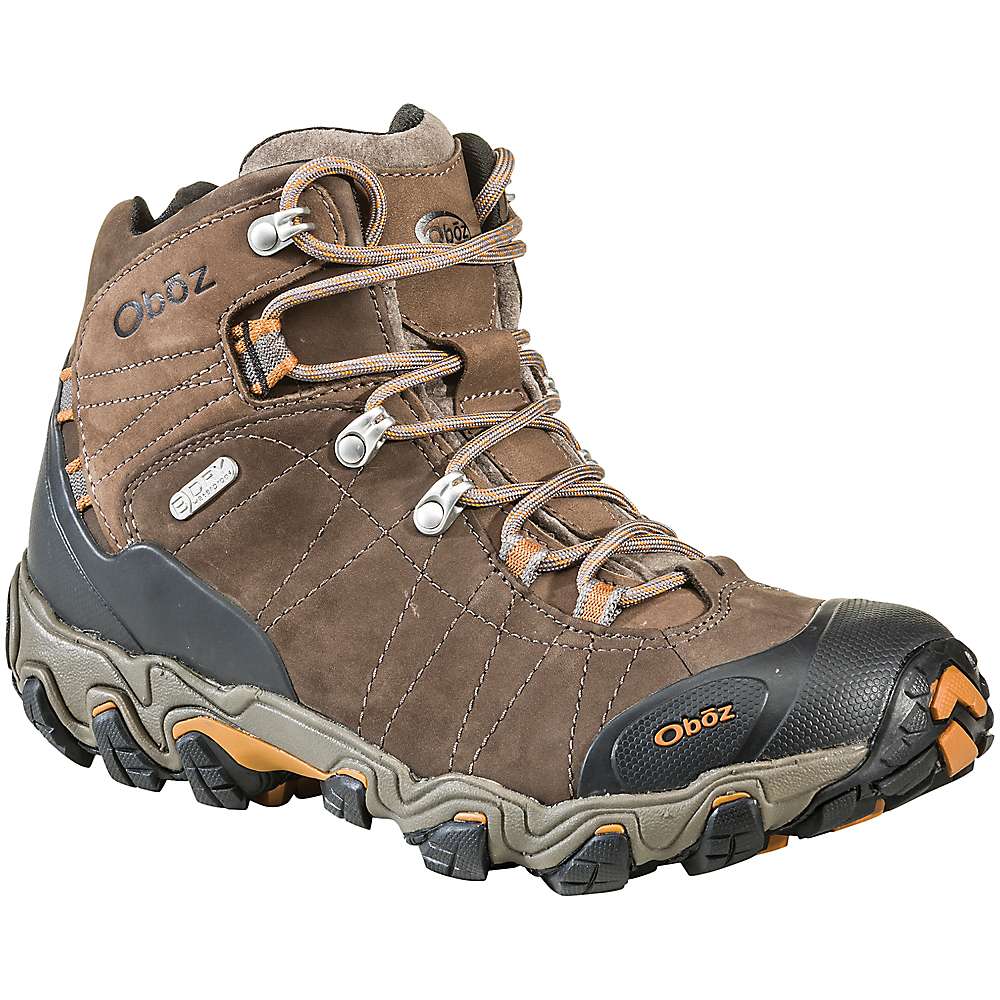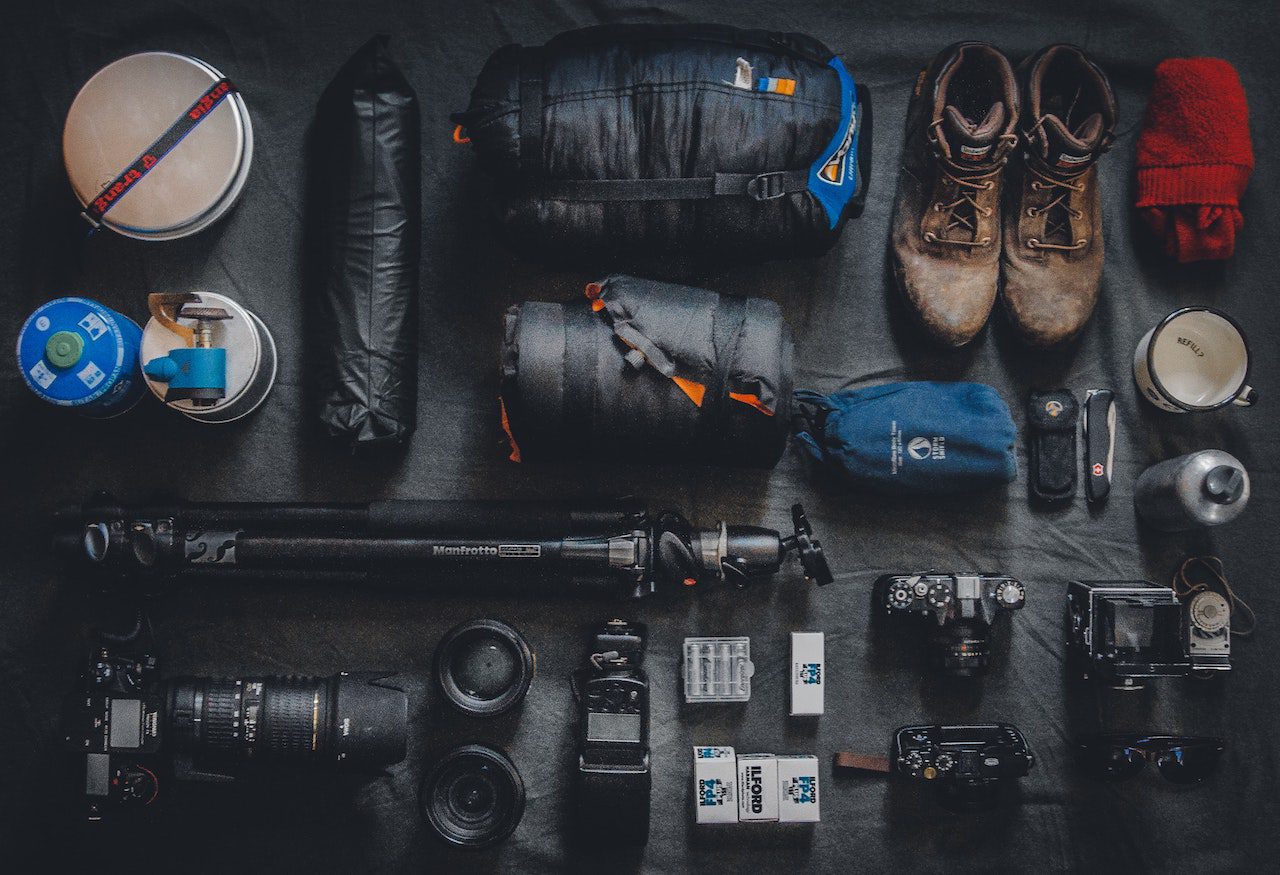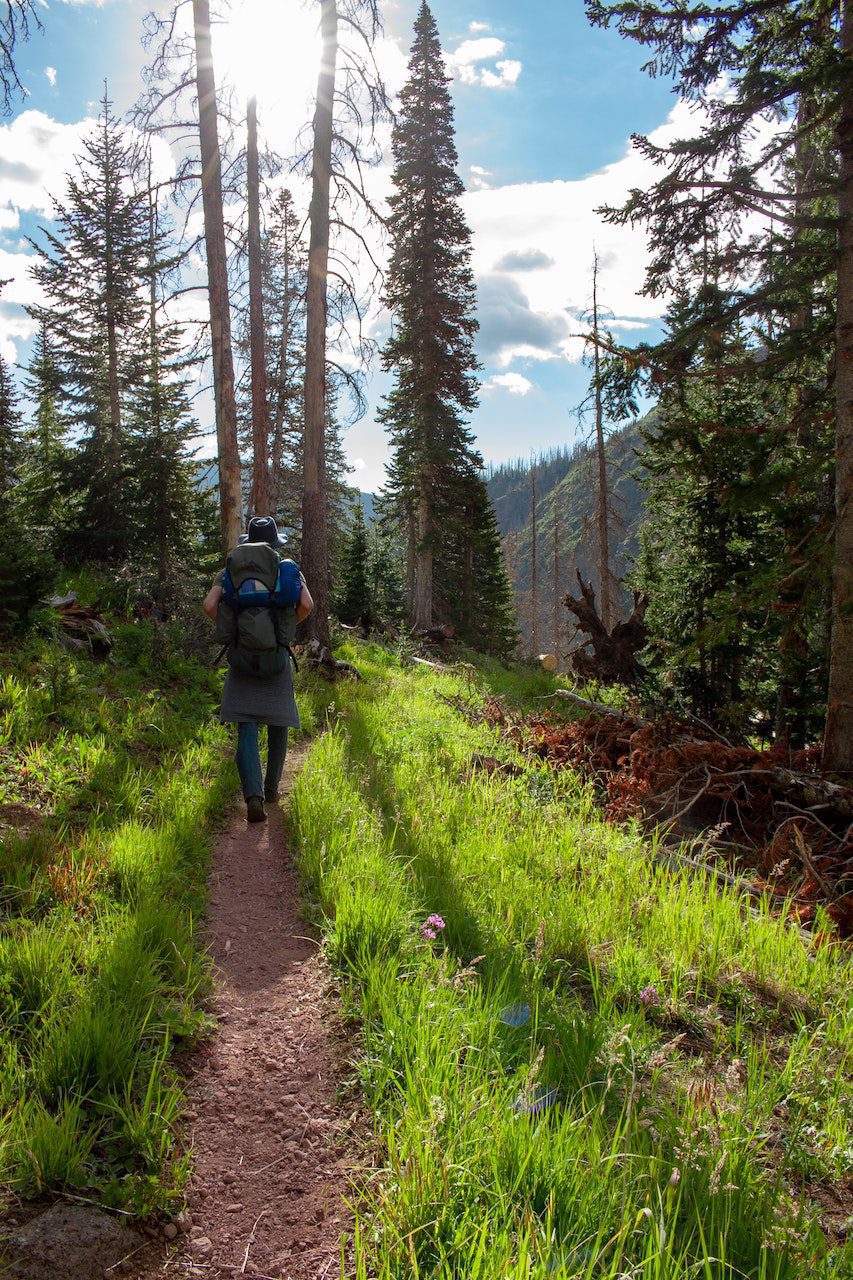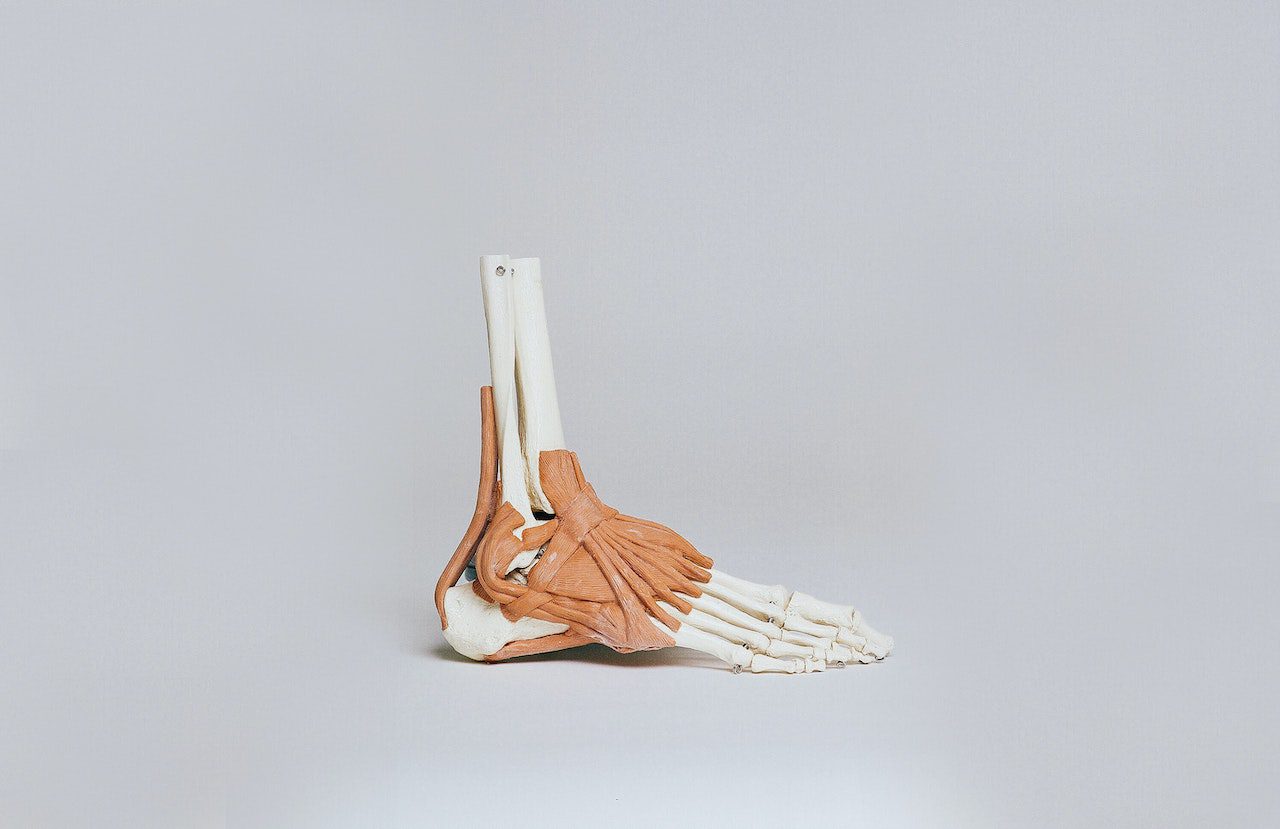
5 Tips On How To Enjoy Hiking In The Rain:
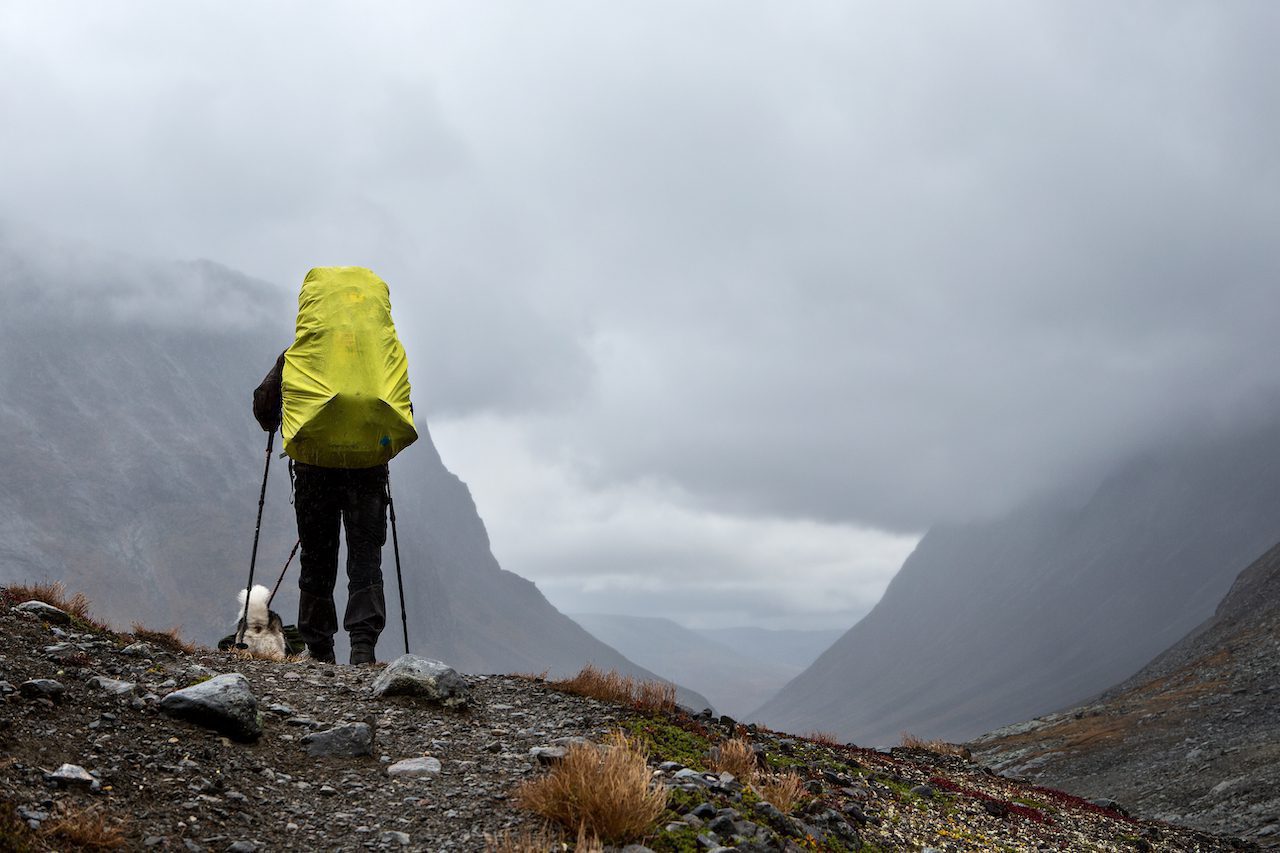
Hiking is fun, but sometimes the weather doesn’t cooperate, and you are stuck hiking in the rain. For some, rain can be the end of a nice hike and the beginning of misery. If unprepared, rainfall during a trek can leave you cold, wet, and can even be dangerous depending on how harsh conditions are.
I know this all too well, as my first backpacking experience in rainy weather was NOT a comfortable one. I was basically dropped from Manhattan into the wilderness of Grand Teton National Park with the wrong gear and no backpacking skills, so at the time, I was miserable. However, after discovering the following tips, I learned how to enjoy hiking in the rain!
To enjoy hiking in the rain you need to be safe, comfortable, and have a positive outlook. If you master the below, you will enjoy hiking in the rain:
- Research and prepare for trail conditions
- Get the right gear
- Dry Out Your Gear
- Safety
- Perspective
Research And Prepare For Trail Conditions:
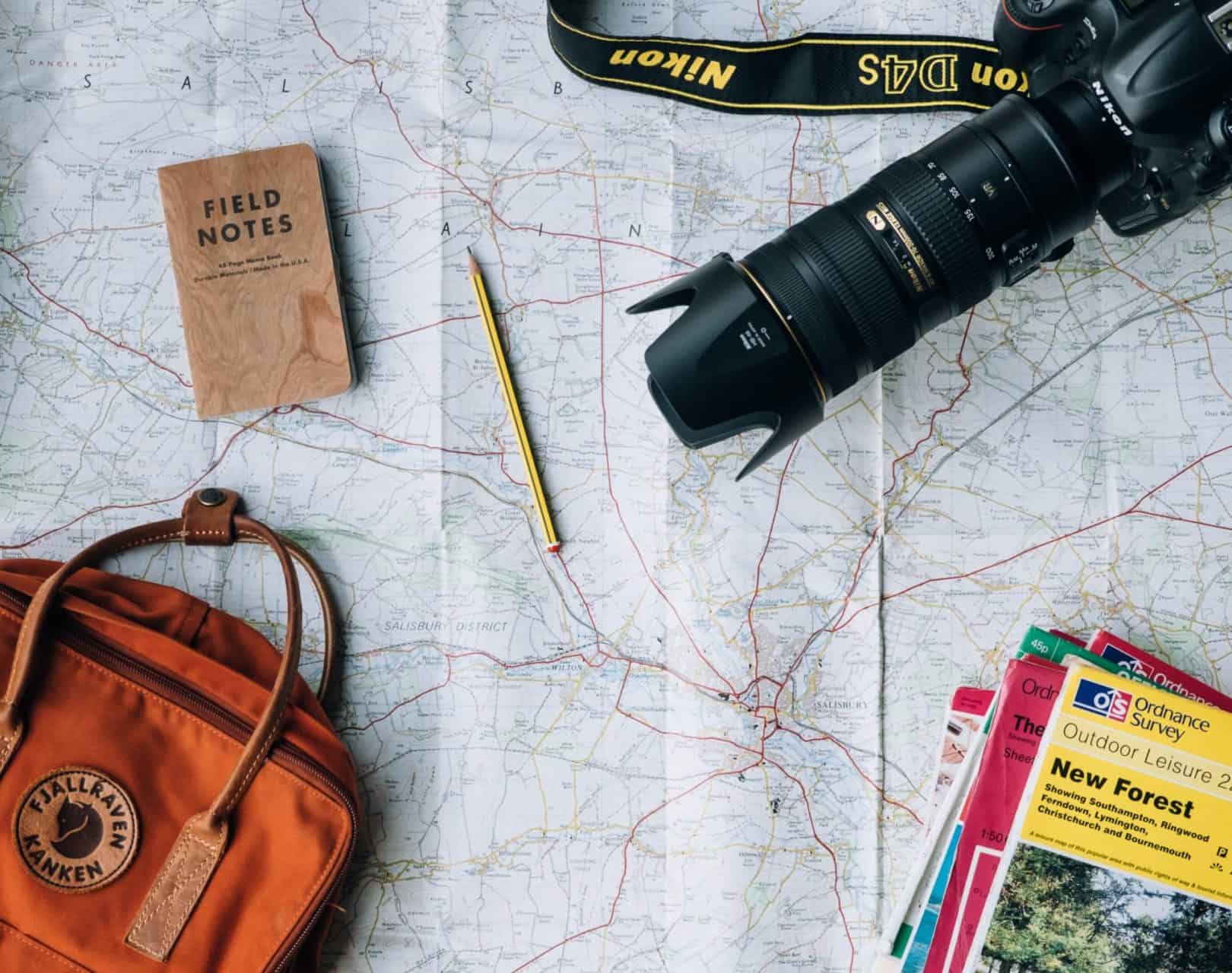
When heading out in the wilderness, the last thing you want is to be in a situation where a strong storm can bring on dangerous events such as river floodings, avalanches and mudslides.
The best way to avoid these situations is to make sure you thoroughly research and prepare for the conditions you will be hiking or backpacking in. The best ways to do this include:
- Researching the weather
- Discuss park conditions with rangers
- Read trip reports on the park
Research Weather Conditions
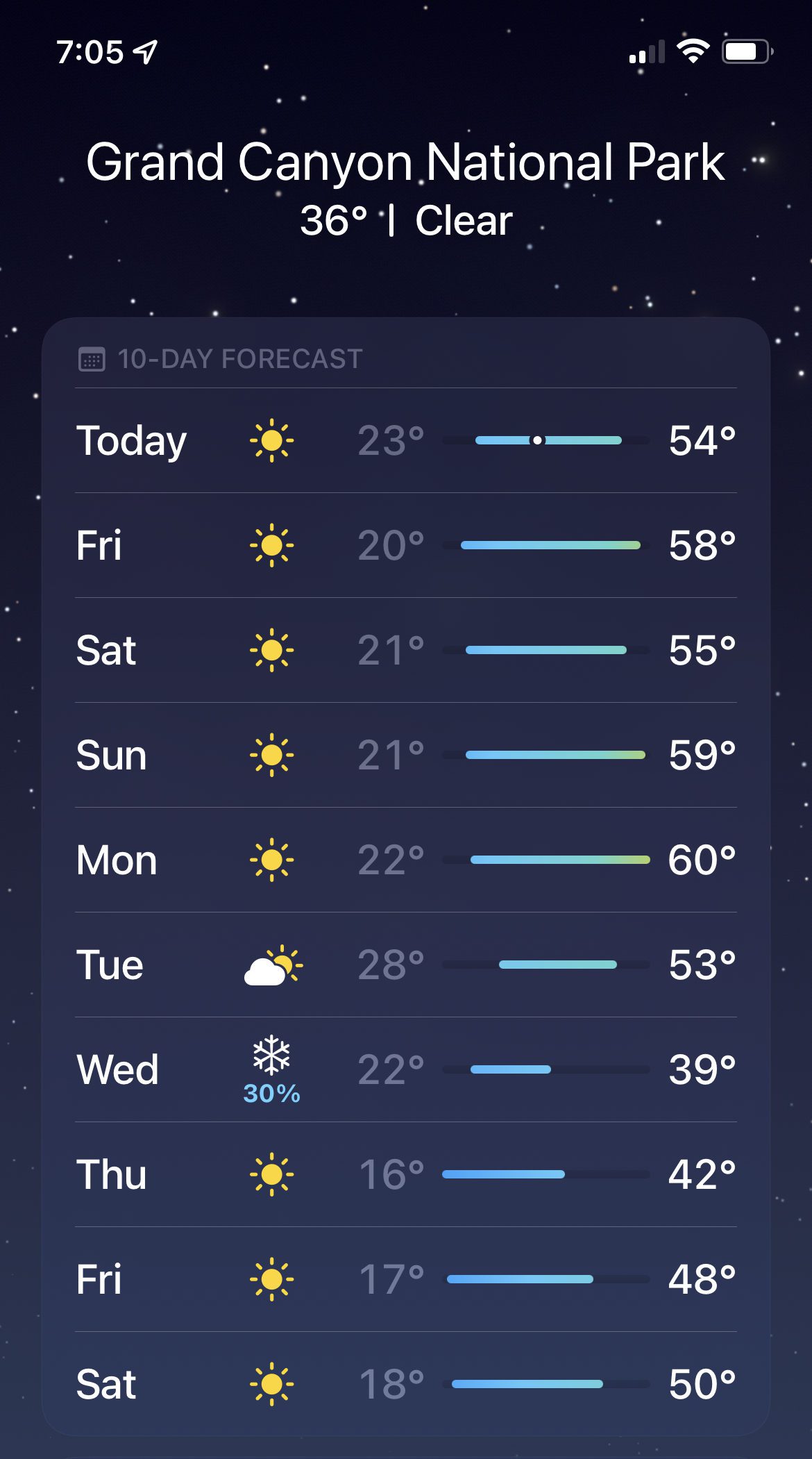
Researching the weather you are hiking in is easy nowadays. Just check your phone to see the chances of encountering rain or snow during your hike. Then make sure you bring the right gear and choose a trek that will be safe even if you encounter inclement weather. Better yet, pick a date without a forecast of rain!
Discuss Your Hike Or Backpacking Itinerary With Rangers:
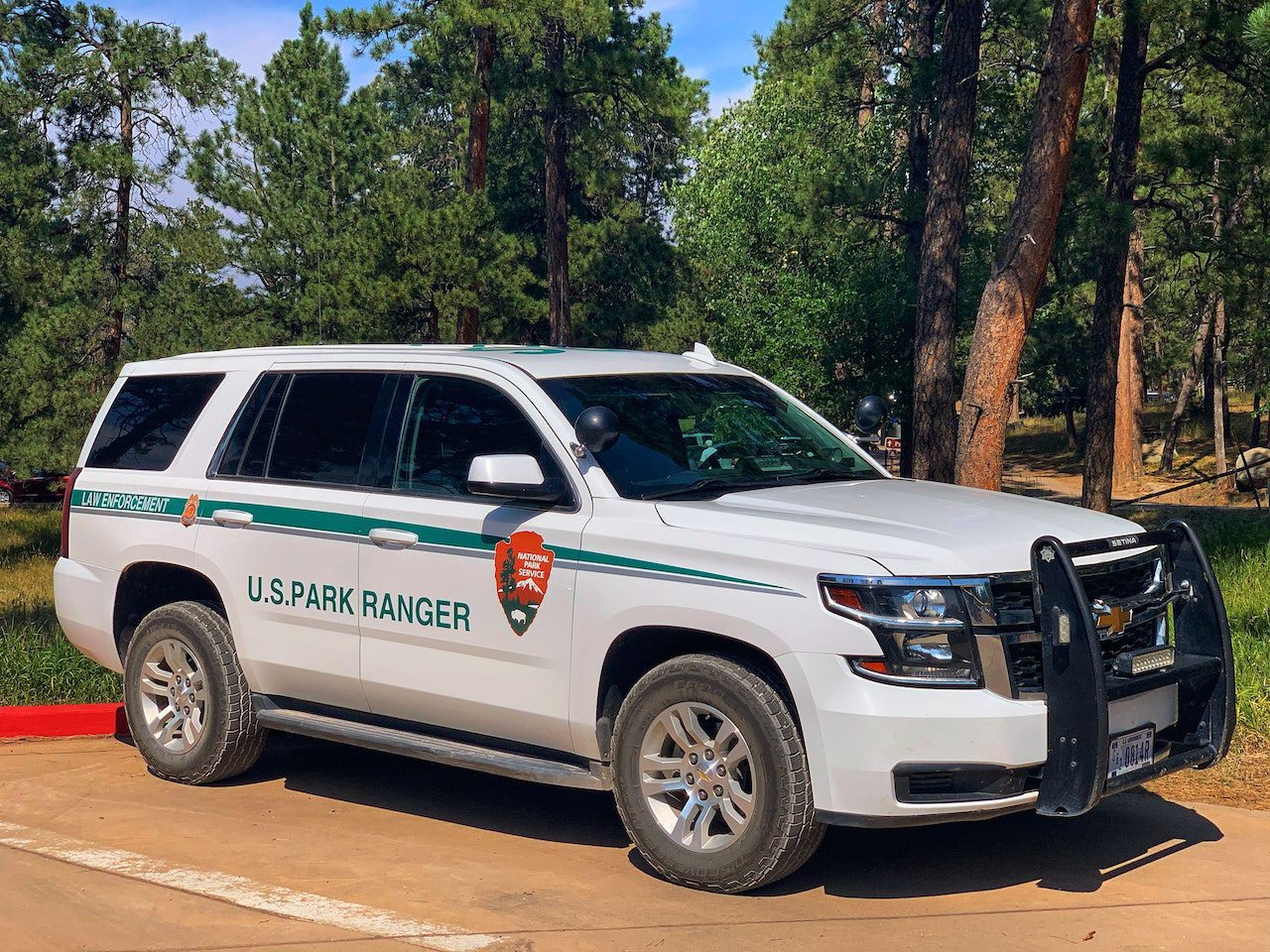
After you have an idea of what weather conditions you can expect, you should touch base with the park rangers to ask if any particular trails or hikes should be avoided in situations of inclement weather. Some areas that can be dangerous in times of rainfall are river crossings and steep rock scrambles. Park rangers are the most knowledgeable people in the park and can provide reliable information on trail conditions.
Read Trip Reports To Learn More About Trail Conditions:
Another helpful resource for preparing for your hike is by using trip reports. There are many websites where backpackers and mountaineers submit trip reports detailing the park’s weather and trail conditions.
Trip reports are a great way to have up-to-date information on the latest trail washouts or downed bridges to give you a better picture of park conditions. By knowing the most recent trail updates before a hike, you will avoid potentially dangerous situations that can arise from heavy rainfall keeping your hike fun and safe.
Have High Quality Rain Gear:
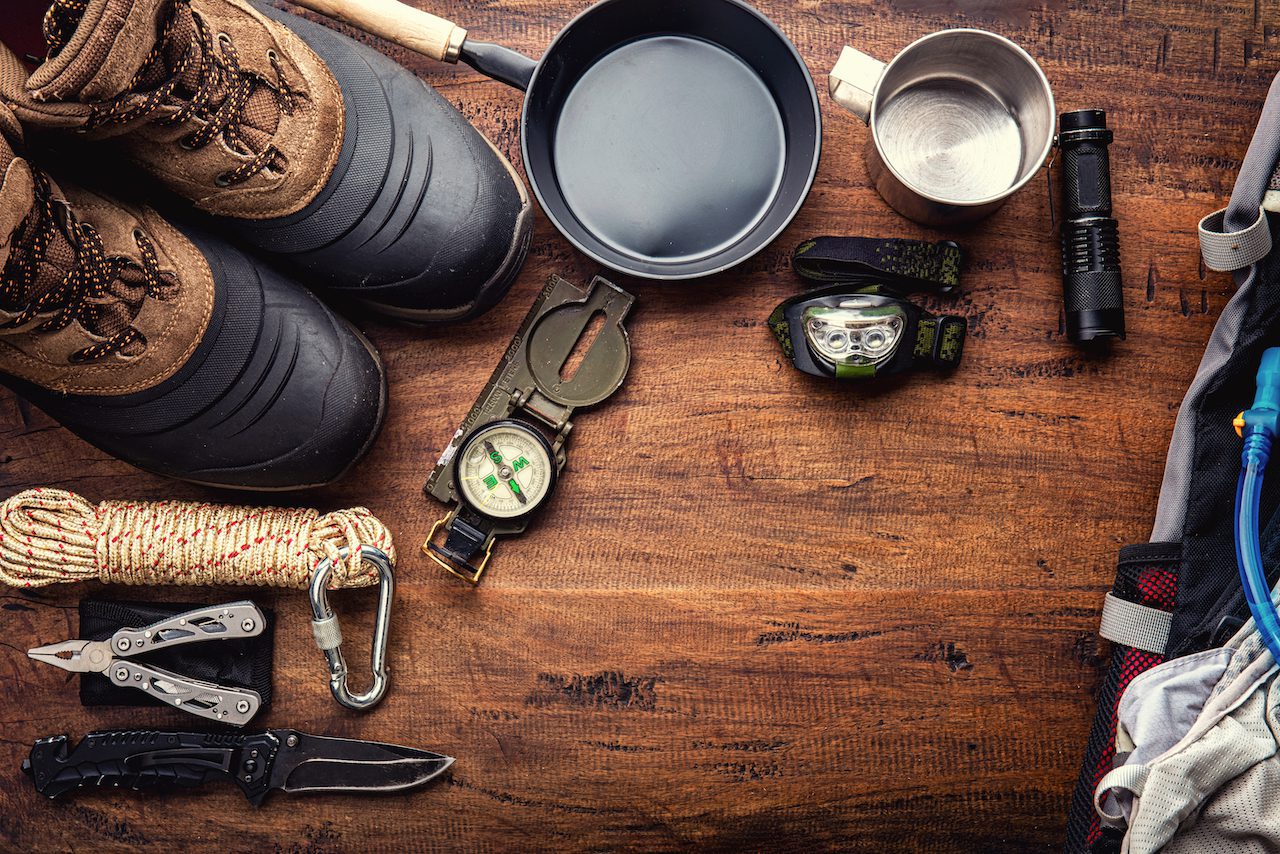
Having high-quality rain gear is essential whenever heading out on the trail, rain gear being no exception. On my first backpacking trip, I made every gear mistake possible. I had no rain cover, no dry bag, all my clothing was cotton, and I was a mess. After several more equipment fails, I finally got myself some high-quality rain gear that worked. It turns out good rain gear keeps you dry and helps you enjoy hiking in the rain. Who knew!?
You should be using the research you have done above on the expected weather and trail conditions to help guide you on exactly what pieces of gear you will need. But we will go over some of the essentials.
Raincover For Your Pack:
A rain cover is a simple yet crucial piece of equipment. It is essentially a waterproof, elastic piece of plastic that wraps around your pack protecting the contents from the rain.
YOU NEED THIS. If you are caught in the rain without a rain cover, you risk ALL of your equipment getting wet. I’m talking spare clothes, sleeping bag, tent, ALL OF IT. Not only will you be cold, but all of the rain getting absorbed into your pack will significantly increase the weight you are carrying around, and you will have a terrible time.
**Pro Tip** if you arrived at the trail and forgot a rain cover, you can use a garbage bag! Just cut holes for your straps, and you will be good to go!
Rain Jacket:
A rain jacket is another mandatory piece of gear to carry with you no matter where, when, or how far you are hiking. Not only does it help keep you dry, but it also keeps you warm. Without a rain jacket, you are far more susceptible to developing hypothermia in situations of cold weather and heavy rainfall.
Water Resistant Hiking Boots And Socks
Hiking boots and socks are a must when hiking in the rain as they offer a degree of water resistance are quicker to dry than many other options out there. While there is no such thing as entirely waterproof hiking boots, what is on the market works quite well and dries off rather quickly.
Wool Hiking socks are also essential as their moisture-wicking properties are great for hiking in the rain and drying quickly.
Dry Bag
A dry bag is another helpful piece of equipment to bring with you when hiking in the rain. Dry bags are waterproof stuff sacks that add an extra layer of water protection for your gear. I typically keep extra clothes or electronics in dry bags when hiking. When I am at camp, I use them to make a bear hang when storing my food and odorous items. Read “How To Store Food While Backpacking” to learn more about food storage when outdoors.
Rain Pants And Rain Boot Covers (Gaiters)
So rain pants and boot covers are not always essential like the above pieces of gear but can be useful in certain situations. I would recommend getting rain pants and rain boot covers on longer backpacking trips where you are gauranteed to encounter rain. While I personally have never used these I wish I had them on my trek of the Tour Du Mont Blanc where it rained for four of my eight days on the trail!
How To Stay Safe When Hiking In The Rain
Hiking in the rain can lead to dangerous situations such as:
- lightning storms
- River floods
- Slippery rock scrambles
These situations can be sudden, and you may face them regardless of how much you prepare or the quality of your equipment. So knowing how to respond to these events safely is crucial.
Hiking Safety In Lightning Storms
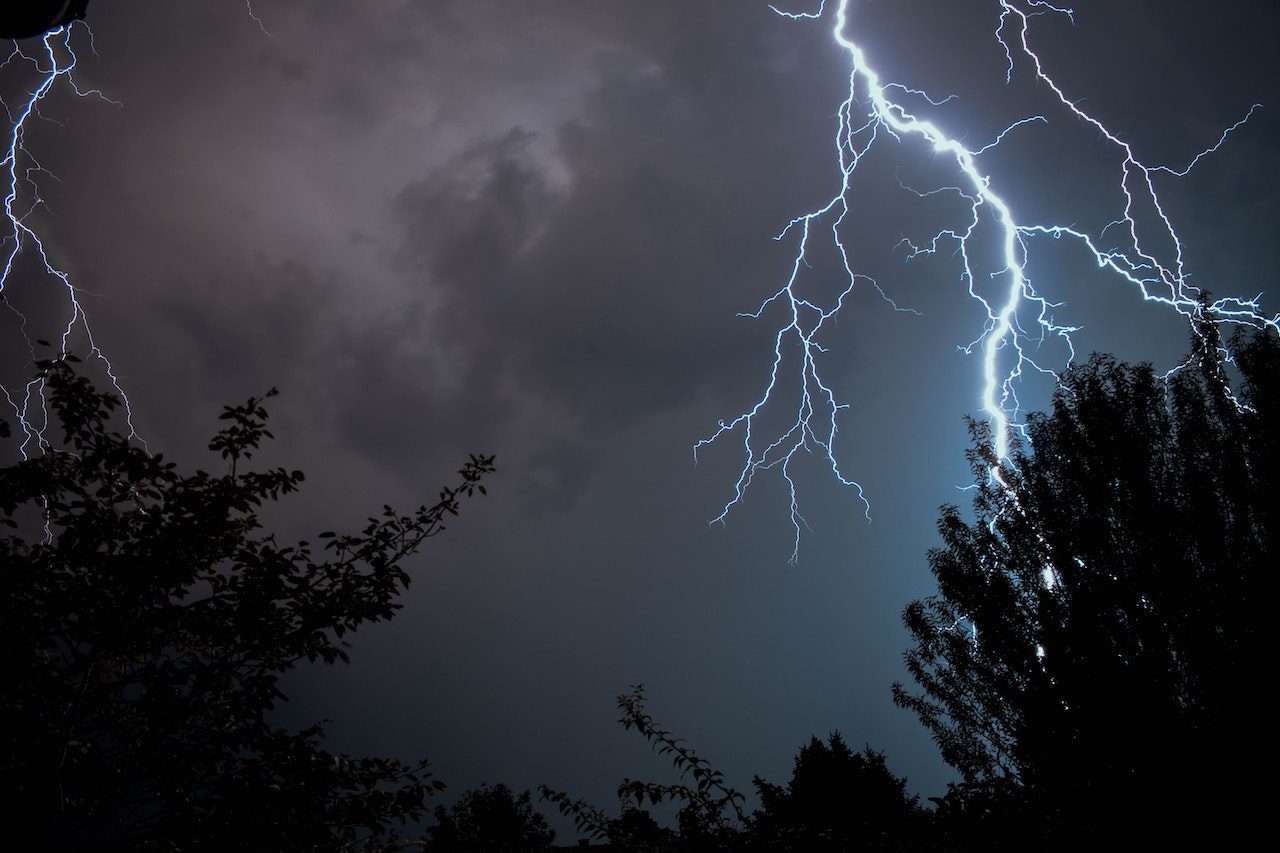
Mountain weather can be unpredictable. One moment you may have clear skies, the next, you are caught in a raging lightning storm. Whenever hiking with lightning present, safety is your number one priority. Here are a couple of tips to keep you safe when hiking in a lightning storm:
- Find Low Ground: If you are on a summit or ridgeline, get down from there and find lower ground immediately.
- Ditch The Metal: you should keep all of your metal equipment (metal frame backpacks, trekking poles, ice axes, etc) at least 100ft away from you if you.
- Take Cover: Avoid open spaces such as large fields or hillsides. These areas act like magnets for lightning. You need to take coverage, whether in a cave or the forest. If you go in the woods, be sure not to take shelter under the largest tree in an area as it can act as a lightning rod.
- Read through the Washington Trail Associations article for more information on lightning safety
River Flooding
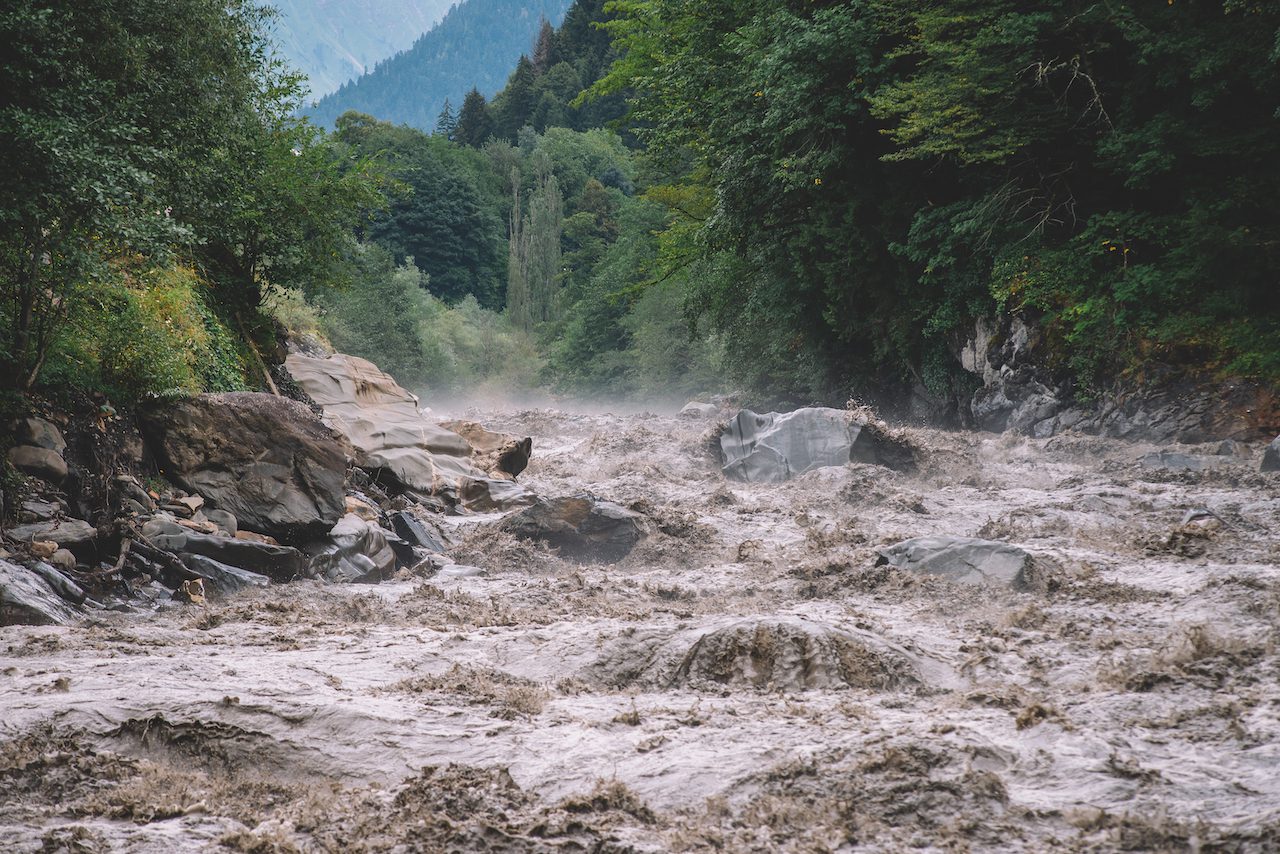
During heavy rainfall, rivers can flood, which can cause strong currents, trail washouts, and destroy bridges. If you find yourself in a situation where a river is overflowing onto the trail, DO NOT attempt to cross it. River currents are fastest during and after periods of heavy rainfall and can sweep you away if you try to cross their strong currents. You should seek high ground immediately and either wait out the storm or begin planning an alternate route.
Rock Scrambles In The Rain
Rock scrambles can be challenging enough in dry weather. When it’s raining, the rocks can be extremely slippery, making them dangerous to scale. Should you encounter a rock scramble when hiking in the rain, I recommend:
- Evaluate the situation do not attempt a technically difficult scramble in the rain.
- Wait for the rain to clear and consider setting up camp.
- Consider taking an alternate route to avoid the scramble.
Dry Off Your Gear And Clothes After Hiking In The Rain
After you spend a day hiking in the rain, you need to make sure you are drying out your gear and clothes for your next day of hiking. If you are going on a day hike, this is easy. Once you get home, just wash your clothes and throw them in the dryer.
However, when it comes to backpacking, you need to get creative to dry off your gear and clothes for the next day of trekking. The last thing you want to do is a hike in wet clothes. It’s uncomfortable, cold, and can cause blisters. A couple of ways to dry off your things after a day of hiking in the rain include:
- Have a dry change of clothes
- Remove the soles of your hiking boots
- Put wet clothes in your sleeping bag while you sleep.
- Avoid cotton
Have A Dry Change Of Clothes
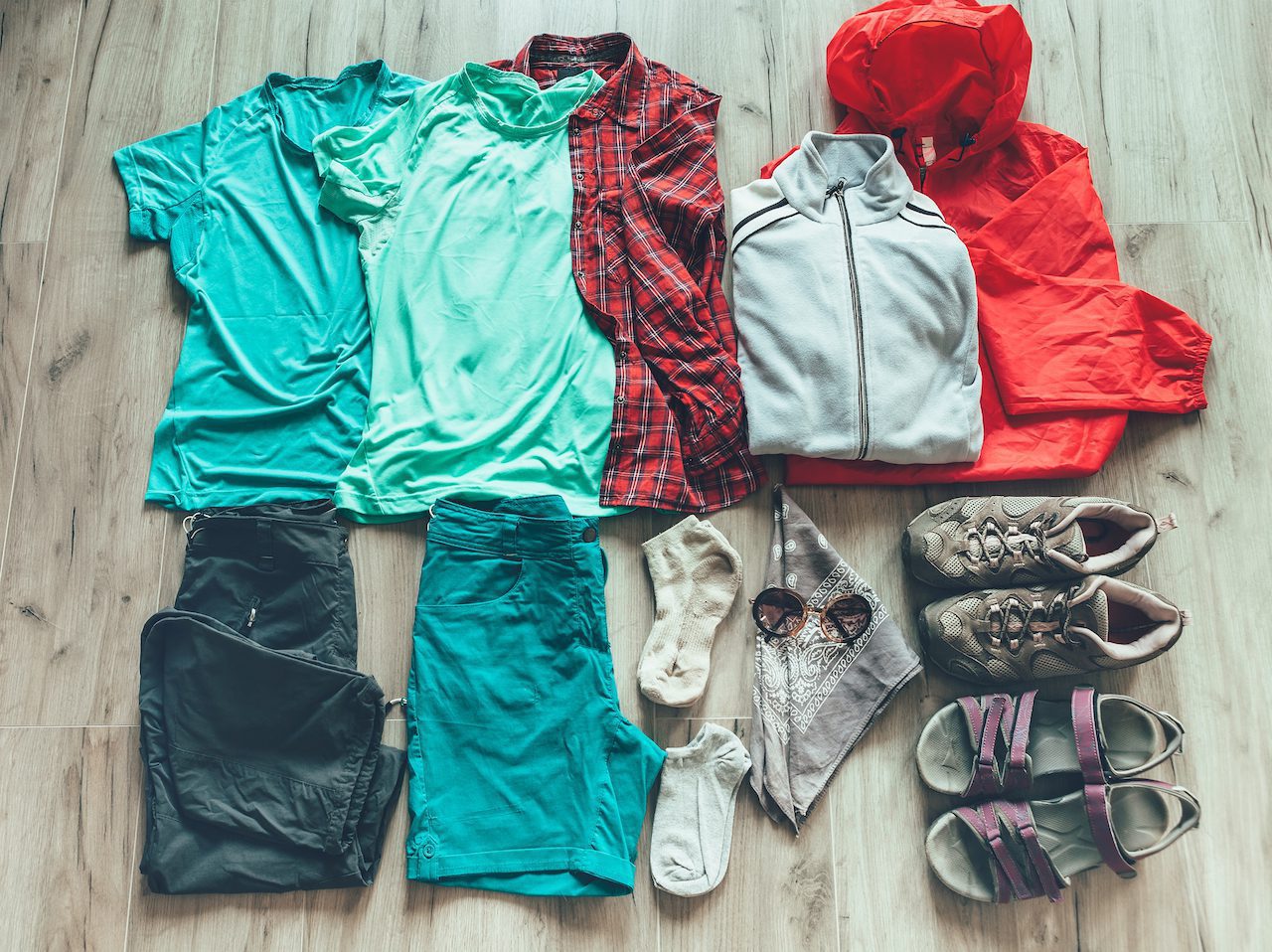
While this isn’t exactly drying off your gear, it is still helpful to have another set of dry clothes to wear after a day of hiking in the rain. When backpacking, I usually have a set of sleep clothes and extra hiking clothes to change into, which comes in handy if my clothes from the previous day are still wet. Having a dry set of clothes makes your next day of hiking infinitely more enjoyable.
Remove The Soles Of Your Hiking Boots
Once you arrive at camp, kick off those wet hiking boots to put on your camp shoes. Then remove the soles from your hiking shoes and them both in the sun to dry. By separating your soles from your boots, you give the sun a bit more surface area to hit, allowing them to dry quickly for your next day of hiking.
Put Your Wet Clothes In Your Sleeping Bag While You Sleep
When you get back from hiking in the rain, you are soaking wet! So you want to try to dry those clothes off as quickly as possible. You’ll find that simply leaving them out overnight to dry doesn’t get the job done. A little trick I like to use is to put some of my wet clothes in the bottom of my sleeping bag when I am sleeping. This helps dry them off faster by using my body heat!
Avoid Cotton
The classic hiker’s line is “Cotton Kills.” While that may be a bit of exaggeration, cotton is a material that will retain more water and will take longer to dry out, making it less than ideal for hiking in the rain. So whenever purchasing hiking gear, you want to do your best to avoid cotton products when possible. Maybe instead of “Cotton Kills,” we’ll go with “Don’t use cotton for hiking because it retains water and sweat will leave you super uncomfortable.”
Keep A Positive Perspective
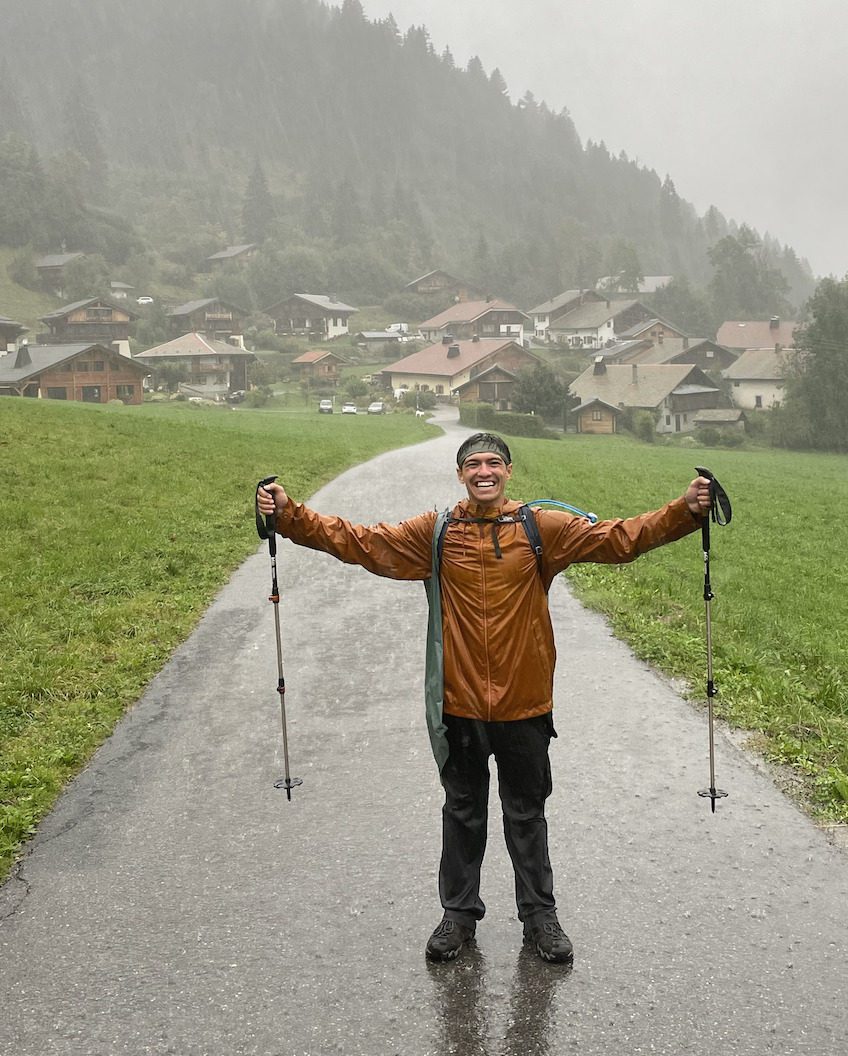
The next tip is to keep a positive outlook when hiking in the rain. Staying positive when you are cold and wet can be challenging, but if you use the following tips, you may start to actually enjoy hiking in the rain!
- Appreciate nature in rain
- Let loose
- Be grateful for the little things
Appreciate Nature In Rain
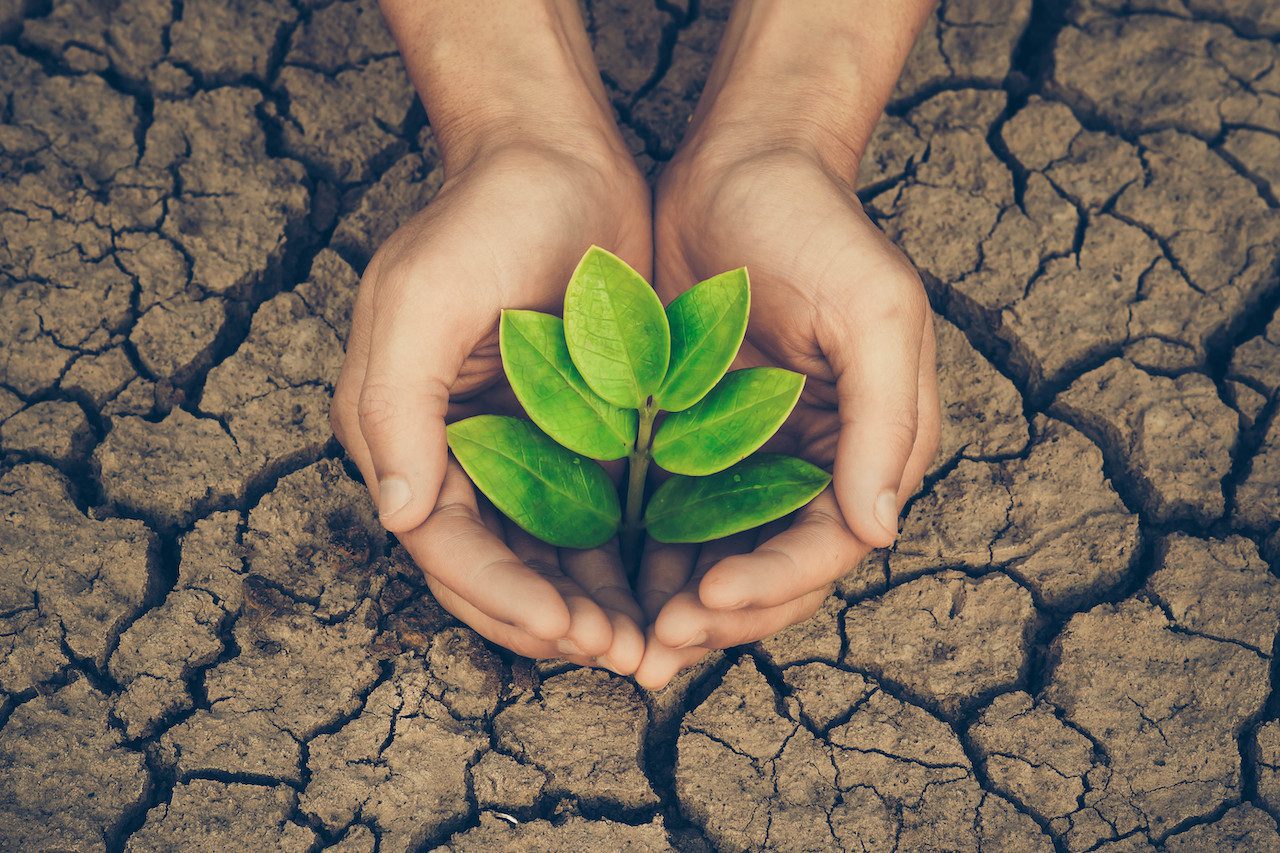
As I said it can be tough to stay positive when cold and wet, but it is essential to realize hiking in the rain gives you a unique way to experience nature. Rain makes the smells of the forest and plants come to life, and you get to hear is a symphony of raindrops playing as you trek. To put it simply, nature is pretty cool when it is raining, so take a second to appreciate it and don’t get bogged down by the inconvenience of rain.
Let Loose
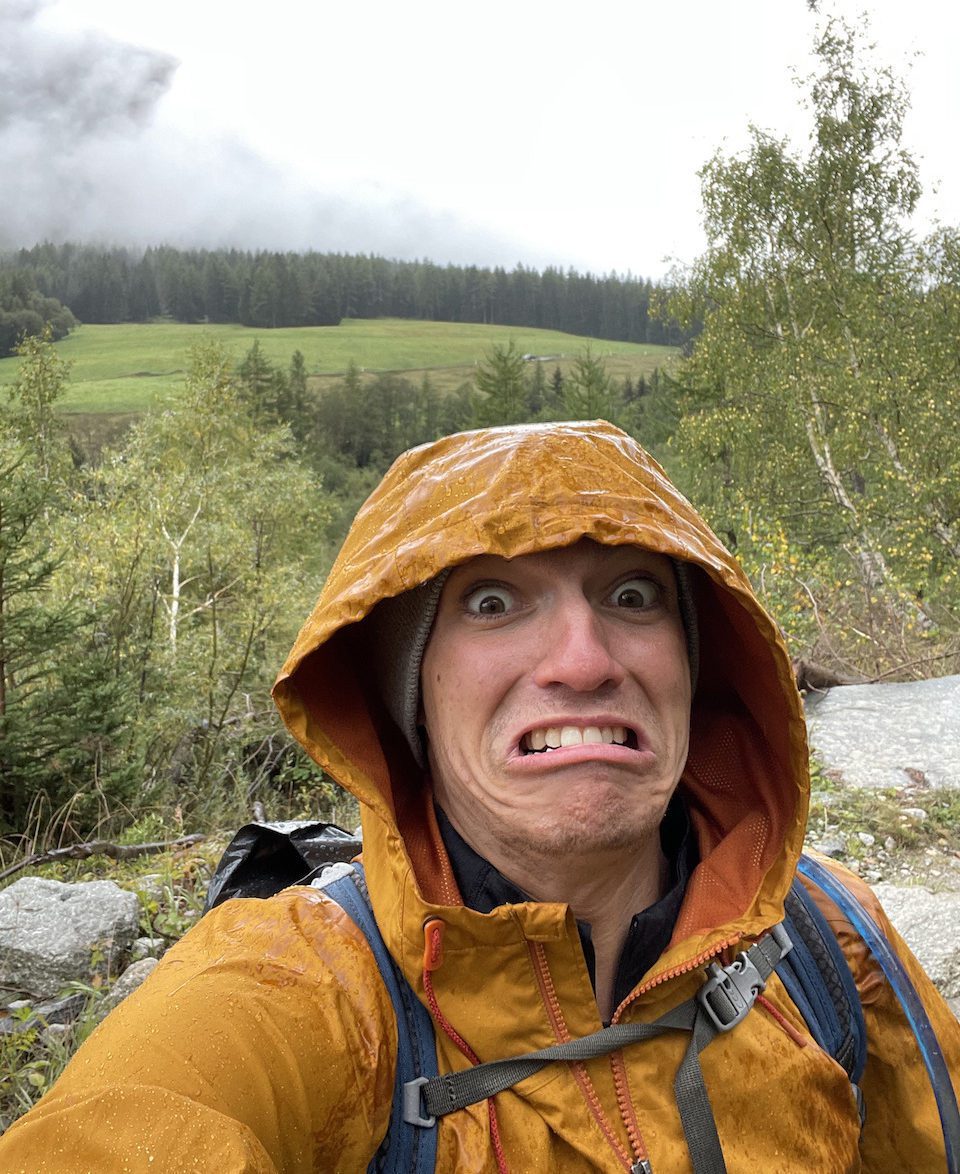
Let loose! Don’t worry about being wet anymore. It doesn’t matter. Nothing you can do will stop the rain, so why worry about it. Keep on hiking, and eventually, being cold and wet won’t bother you. You may even start to feel free, running and yelling like a wild child through the wilderness (or maybe that’s just me). Either way, you need to finish your hike, so you might as well do it with a smile on your face enjoying yourself in nature!
Be Grateful For The Little Things
When you finally arrive at camp or your car you will be so excited and happy because you are now free to relax, change your clothes and get comfortable. When you get warm and have your first bite of food, it will taste amazing no matter what it is!
There are very few times I have been as happy as when I arrive at camp from a rainy hike treating myself to the most basic needs shelter, dry clothes and a warm meal.
Hope This Helps!
I hope these tips help you out for your next hike in the rain. Post your hiking in the rain tips in the comments!



